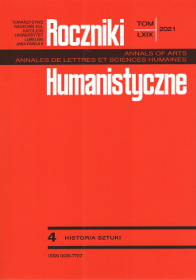Art and Artists in City Space. Political and Economic Conditions of Art-based Revitalisation/Gentrification in Poland in both the Communist and Neo-liberal Reality: Elbląg Biennale of Spatial Forms and Gdańsk Shipyard Case Studies
Art and Artists in City Space: Political and Economic Conditions of Art-based Revitalisation/Gentrification in Poland in both the Communist and Neo-liberal Reality: Elbląg Biennale of Spatial Forms and Gdańsk Shipyard Case Studies
Author(s): Elżbieta Błotnicka-MazurSubject(s): Fine Arts / Performing Arts, Architecture, History of Art
Published by: Towarzystwo Naukowe KUL & Katolicki Uniwersytet Lubelski Jana Pawła II
Keywords: public space; gentrification; revitalisation; Biennale of Spatial Forms in Elbląg; Gdańsk Shipyard
Summary/Abstract: This paper addresses and compares the issue of introducing new art forms into the city space in order to revitalise or gentrify it, in two different political and economic realities: that of Poland under Communism and in the era of the free market. The phenomenon of the biennales, which were most frequently organised in the 1960s, is analysed, based mainly on the First Elbląg Biennale of Spatial Forms in 1965, as is one contemporary revitalisation process which has been achieved thanks to artistic activity, namely, the case of the Gdańsk Shipyard. These artistic phenomena are presented against the backdrop of the political and economic realities of Communist Poland in the 1960s, where they had to find a balance between artistic freedom and political limitations, as well as contemporary post-1989 Poland, where economically-conditioned artistic activities (intended to revitalise the post-shipyard space) clash with the hard rules of the free-market economy.
Journal: Roczniki Humanistyczne
- Issue Year: 69/2021
- Issue No: 4
- Page Range: 425-445
- Page Count: 21
- Language: English

